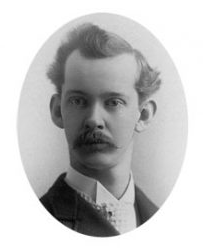 Super hot sauces
Super hot sauces
We’re about to dive into the scorching world of hot hot sauces, where your average condiment fears to tread. These aren’t your run-of-the-mill table sauces – oh no, we’re talking about tongue-blistering, sweat-inducing concoctions that’ll have you questioning your life choices.
Before we get into the nitty-gritty, let’s talk about the Scoville Scale. This isn’t just some fancy thermometer; it’s the holy grail of heat measurement in the chilli world. Your garden-variety jalapeño? It’s a mere tickle at 2,500 to 8,000 Scoville Heat Units (SHU). But the sauces we’re about to explore? They’re in a whole different league, mate. We’re talking over 1,000,000 SHU – that’s not heat, that’s bloody lava in a bottle!
different league, mate. We’re talking over 1,000,000 SHU – that’s not heat, that’s bloody lava in a bottle!
Now, you might be wondering, “Who in their right mind would want to subject themselves to such torture?” Well, let me tell you, there’s a whole community of heat enthusiasts out there who live for this stuff. They’re not just after the burn; they’re chasing the endorphin rush, the flavour complexity, and yes, maybe a bit of bragging rights. It’s a culinary extreme sport, if you will, and these hot hot sauces are the Mount Everest of the condiment world.
Now, buckle up and grab a glass of milk. We’re about to embark on a tour of the hottest of the hot, the crème de la crème of crazy heat. From YouTube sensations to Aussie face-melters, we’ve got a lineup that’ll make your taste buds stand up and beg for mercy. So, if you’re ready to push your palate to its limits and beyond, let’s dive into the fiery world of hot hot sauces!

 Measuring Spicy Heat
Measuring Spicy Heat
 A Comprehensive Guide
A Comprehensive Guide what grows well in the UK and what to look out for. Despite our cooler weather, several chilli varieties thrive here. Apache and
what grows well in the UK and what to look out for. Despite our cooler weather, several chilli varieties thrive here. Apache and 
 drinks. Today, this historical pairing has been reinvented and refined, consequently offering a sophisticated flavour profile that appeals to modern palates.
drinks. Today, this historical pairing has been reinvented and refined, consequently offering a sophisticated flavour profile that appeals to modern palates. More than a salad dressing
More than a salad dressing salad to the savoury richness of
salad to the savoury richness of  A Fiery Culinary Staple in British Kitchens
A Fiery Culinary Staple in British Kitchens across the country.
across the country. Some history
Some history version featured deep-fried wings coated in a spicy vinegar-based cayenne pepper hot sauce and served with celery sticks and blue cheese dressing.
version featured deep-fried wings coated in a spicy vinegar-based cayenne pepper hot sauce and served with celery sticks and blue cheese dressing. A Global Culinary Phenomenon
A Global Culinary Phenomenon Dragon compete with supermarket own-labels from Tesco,
Dragon compete with supermarket own-labels from Tesco, A Global Culinary Tradition
A Global Culinary Tradition beyond the simple combination of heat and acidity. This customisation showcases the creativity and resourcefulness of different culinary traditions.
beyond the simple combination of heat and acidity. This customisation showcases the creativity and resourcefulness of different culinary traditions.
